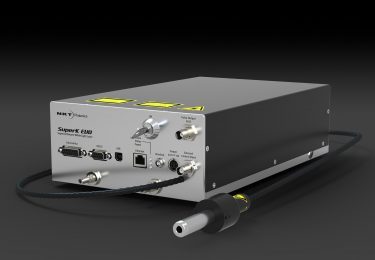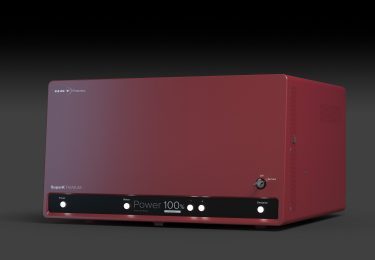To gain insight into the properties of perovskite nanocrystals, the team used an NKT Photonics supercontinuum laser, the SuperK EXTREME/FIANIUM with built-in pulse picker, in combination with the spectral filter, SuperK VARIA, as a tunable excitation source.
Perovskite nanocrystals boast high photoluminescence quantum yield
Perovskite nanocrystals have photoluminescence quantum yields as high as 99% despite a very cheap and easy synthesis which make them an ideal candidate for future LEDs and other light-emitting applications.
Bandgap tuning enables emission wavelengths in the visible spectrum
Another exciting aspect is the possibility of bandgap tuning by changing the size and composition of the nanocrystals. This allows for emission wavelengths in the whole visible spectrum but creates the need for different excitation wavelengths. Here, the wavelength tunability of the SuperK EXTREME/FIANIUM in combination with the SuperK VARIA spectral filter proves very useful.
Access to information on individual nanocrystals
In the first setup, the team excited atoms to create charge carriers in the nanocrystal. Then, they applied different measurement techniques to collect photoluminescence with high magnification objectives.
The team obtained a high spatial resolution that enabled them to collect the signals of individual nanocrystals normally inaccessible when measuring large nanocrystal ensembles.

Photoluminescence decay curves help investigate light emission behavior
The team used the pulsed nature of the laser and the built-in pulse picker to conduct Time-Correlated Single Photon Counting (TCSPC) measurements to form photoluminescence decay curves. The decay curves reveal important information about the fundamental decay mechanisms which are responsible for the nanocrystals’ light emission behavior.
The team also investigated nanocrystal thin films mounted in a cryostat to acquire all the described data in dependence of temperature.
Diffusion processes between adjacent nanocrystals
In a second setup, the team excited nanocrystal films at one spot while collecting photoluminescence from another spot. This technique reveals diffusion process information mainly governed by transfer processes between adjacent nanocrystals. This knowledge is also crucial for future applications exploiting the remarkable properties of perovskite nanocrystals.

Advantages of the SuperK laser and filter
The use of a SuperK EXTREME/FIANIUM laser in different setups is enabled by the easy mounting of the laser output fiber in the collimator holders mounted in the different setups.
The SuperK laser is fully modular, allowing easy operation and service where accessory modules can be added without configuration – all plug & play. Operation is simple and functions can be changed on-the-fly without powering down the system.
The SuperK VARIA filter turns the SuperK laser into a powerful single-line laser with a 440 nm tuning range and variable bandwidth. The center wavelength of the passband can be tuned anywhere between 400 and 840 nm and the bandwidth is variable between 10 and 100 nm.
Other work on perovskites
- Nonradiative Energy Transfer between Thickness-Controlled Halide Perovskite Nanoplatelets by Andreas Singldinger, Moritz Gramlich, Christoph Gruber, Carola Lampe, and Alexander S. Urban published in ACS Energy Letters 0, 5. DOI: 10.1021/acsenergylett.0c00471.
- Polymer Nanoreactors Shield Perovskite Nanocrystals from Degradation by Verena A. Hintermayr, Carola Lampe, Maximilian Löw, Janina Roemer, Willem Vanderlinden, Moritz Gramlich, Anton X. Böhm, Cornelia Sattler, Bert Nickel, Theobald Lohmüller, and Alexander S. Urban published in Nano Letters 2019 19 (8), 4928-4933. DOI: 10.1021/acs.nanolett.9b00982.
Wonder what perovskites are?
Perovskites are a vast number of compounds with a perovskite crystal structure using the chemical formula: ABX3 where A and B are cations (e.g. CH3NH3 and Pb), and X is an anion (e.g. I, Cl or O).






